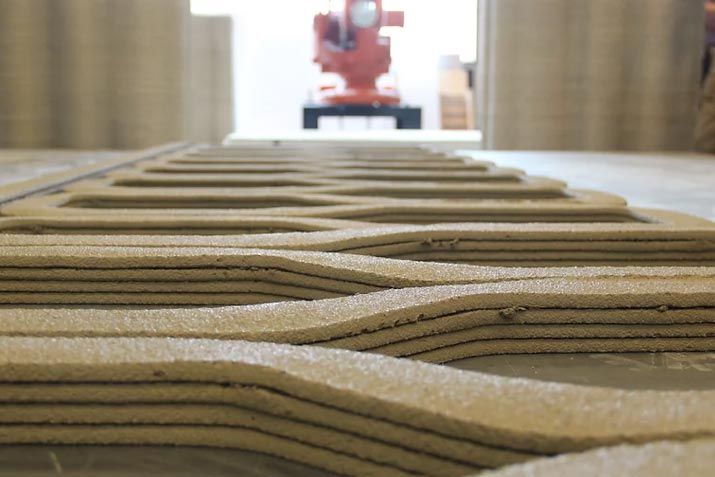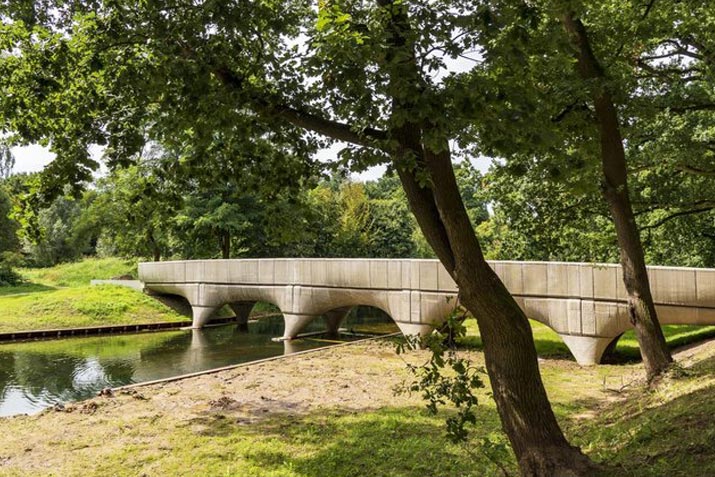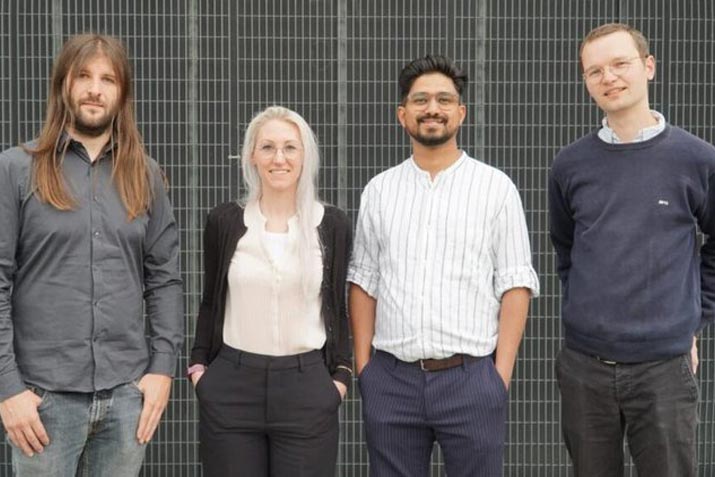

Dutch start-up aims to automate and digitise construction with 3D concrete printing
The trigger for the new Dutch based start-up was ignited by the successful printing last year of the longest 3D printed bicycle bridge in the world (3D concrete printing). What broadly differentiated the 29-metre-long structure is that the architect had the design freedom to explore free-form shapes to optimise the structure.
The technology behind the 3D printed bicycle bridge was made possible by the research carried out by Dutch PhD student, Zeeshan Ahmed, under Professor Theo Salet at the Dutch Eindhoven University of Technology (TU/e).

ABOVE: 3D-printed concrete bicycle bridge in Nijmegen, Netherlands.
Zeeshan now wants to translate that same technology to the construction industry, and so he founded the start-up, Zavhy, to achieve exactly that.
Its mission is clear: The company wants to automate and digitise the construction sector and address its setbacks related to productivity, sustainability and affordability with 3D concrete printing (3DCP). “With 3DCP, we can build faster and improve the quality of construction. Besides that, the process will become cheaper and more sustainable, because of the efficient use of material,” explains Zeeshan Ahmed.

ABOVE: Zavhy team (L-R): Frits Rooyackers, Wendy Volkers, Zeeshan Ahmed and Taco van Meeteren.
During his PhD at TU/e, Zeeshan focused on finding a solution for two major disadvantages of 3DCP technology. One was the lack of steel reinforcement in 3D-printed concrete structures that provide strength. Besides that, additives such as fibres and aggregates that improve the material properties of concrete, were missing.
Keeping an eye to industrialise the technology, he developed two machines. One to add steel cable reinforcement into the concrete called Reinforcement Entrainment Device (RED) and a Fibre Reinforcement Entrainment Device (FRED) to add fibres and aggregates.
The efforts payed dividends in July last year, when the start-up secured a REACT-EU grant of €420.000 to further develop the FRED system. In November 2021, a second grant (the MIT R&D grant) of €200.000 followed, which enabled the company to work on developing the RED system, too.
Both the RED and FRED projects are being carried out in collaboration with engineering companies Van Beek and TBRM ES, who also received part of the funding. “The external recognition we received with those fundings, was very important to overcome any self-doubt we had regarding Zahvy. We could show everyone that what we’re trying to accomplish is important.”
It also helped Zavhy secure new collaborations with companies who are trying to address similar issues for the 3DCP technology. Zeeshan: “We’ve come full circle now that we have sold the first prototype of the FRED system to TU/e, so they can carry out new research.”
Because 3DCP technology is still so new, Zeeshan and his company have deliberately chosen to cover all aspects of the technology in order to best support the growth of the 3DCP market. He wants to create a consortium of companies and connect the value chain around 3D concrete printing so that issues can be addressed collectively. “That way, everyone involved in the construction industry could benefit from it and stimulate others to change their mind when it comes to 3DCP. It’s about the whole process. We need to valorise the technology and keep doing research, but also work on the hardware and software. And then apply what we do in projects. We develop the material, develop the system that allows that material to be printed, and contribute to the design and construction.”
“It’s not about my business. I want to support others and make construction more sustainable together. My biggest competitors are not the start-ups, but the traditional construction companies. I need to show them the benefits of adopting 3DCP technology and get them on my side of the table.”
See the longest 3D printed bicycle bridge HERE
See: www.zavhy.com
CLICK HERE to return to the home page for more articles.